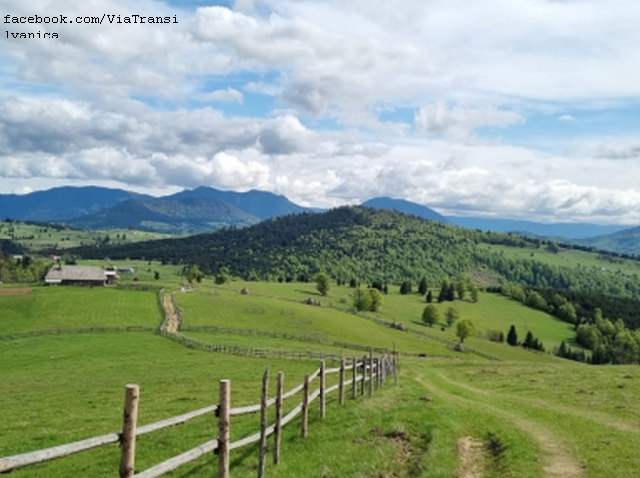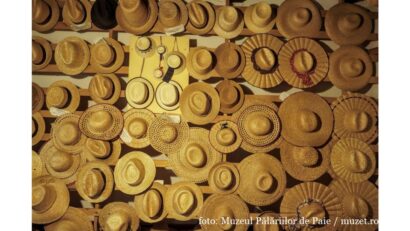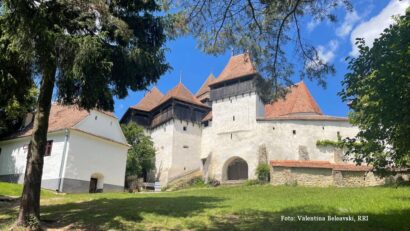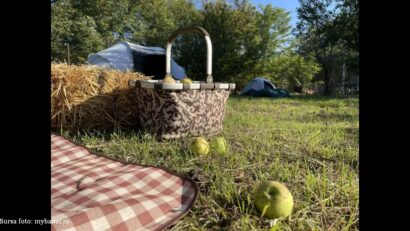Via Transilvanica – a route of national importance
Launched seven years ago, Via Transilvanica allows tourists an insight into both Romania’s history and its modern life.

Daniel Onea, 02.10.2025, 14:00
Travelling on Via Transilvanica allows tourists an insight into both Romania’s history and its modern life. Nature lovers will also be delighted, with the Transylvanian Hills, the Călimani mountains and the valleys along the way being just some of the attractions. Moreover, the government has recently adopted the application norms for long-distance pedestrian routes. Via Transilvanica is one such long-distance route that crosses Romania over a course of 1,600 km. It was initiated by the Tășuleasa Social NGO and was made possible with the help of volunteers, as a civil society project aimed at showing the world a different side to Romania. Alin Ușeriu, the president of Tășuleasa Social, says the route was not intended as a mere tourist project, but as a gesture of national solidarity, a gift to Romania on the 100th anniversary of the Great Union. He explains:
“On 12th June we celebrated 7 years since we launched Via Transilvanica. It was a maturity test for our organisation and we wanted at the time to do something that doesn’t use what usually brings us together, namely fear, but our shared values. Romania was also celebrating the 100th anniversary of its Great Union and so we asked ourselves: are we really united? Can we do something really big? Can we do something relevant? Via Transilvanica is now 7 years old and I believed we achieved all of that.”
The route is marked by andesite milestones carved by hundreds of volunteers, each one being a work of art. It crosses 10 counties and takes visitors to an amazing variety of landscapes and cultures: gentle hills, remote villages, imposing mountains and towns laden with history. But Via Transilvanica is not just about landscapes. It is, first and foremost, about people, about rural communities, local food and untold stories. It is also a deep immersion into authentic Romania. Tibi Ușeriu, who is an ultramarathon runner and one of the project’s main ambassadors, sums up the experience:
“It’s very different. I don’t have to tell you about city life versus village life. What you will discover travelling on Via Transilvanica is the authenticity of Romanian village life and of the people. In order to truly know your country, you have to cross it by foot, meet its people, listen to the stories of the places, eat the local food, of which, by the way, there is an incredible variety. And in order to live an authentic experience and see where we come from and where Romania comes from, I believe there is a big difference between visiting a town or a city and seeing authentic Romania.”
Travelers are sure to find their favorite part of the route. It could be the charm of the villages in the Cerna Mountains or the lunar landscape at Fundătura Ponorului, places of extraordinary beauty. These are just a few of the hidden gems you will discover far from the hustle and bustle of big cities.
“When I arrived in Bukovina, I was amazed, because it was a little different from how it is here. But I like the part with Ineleț, Cerna Valley the most. I left with a very nice feeling, I saw very welcoming and kind people and some breath-taking landscapes that you didn’t think could exist in Romania. So, Fundătura Ponorului, Cerna Valley is my favourite area”.
However, Via Transilvanica is more than a project about the past and traditions. It is a development engine for rural communities, a chance for rebirth. Hikers who follow the route are not simple tourists – they become part of a living social circuit, which brings admiration and economic support to areas where life is often a struggle. By buying local products or staying overnight in a local guesthouse, tourists directly contribute to the survival of this fragile universe. Alin Ușeriu explains this essential social dimension.
“Via Transilvanica is not a tourist brand. It is perceived as such, and I am very happy about it, but it is, first and foremost, a social circuit, which seeks solutions, which has already found many solutions, which offers something that has not been offered in rural areas for a very long time: admiration. Rural areas are almost on the verge of extinction. This haemorrhage of people has left rural areas unpopulated, and this is very dangerous, because the basic cells of Romanian DNA were, in fact, the rural household and the mountain household. And these, no longer being used, no longer functional, give an X-ray of our current society, which, anyway, must get together again and start on a new path”.
So, why would you choose to walk this route, even if only for a few days? Because it is a challenge, an adventure and a unique opportunity to connect with nature in a profound way. It is a journey that is not measured only in kilometres, but in experience, in friendships made along the way and, above all, in knowledge.
“Via Transilvanica should be travelled more like a mission. The best way to know yourself is when you walk, one foot in front of the other. And I’ve done it. I have three long-distance routes, in Spain, France and Portugal, in Japan and, already, I have completed Via Transilvanica once. I am on my second trip right now. This is the biggest investment I have made in myself. Via Transilvanica should be taken as it is and we must walk it with an open heart, to discover it. And this is ultimately my advice and my request to everyone listening: walk Via Transilvanica and you will see that you will get to know yourself too, which is probably the most precious and sought-after thing these days”.
All that’s left for your to do, therefore, is go to viatransilvanica.com, choose a route section and hit the road! (CM & VP)






























